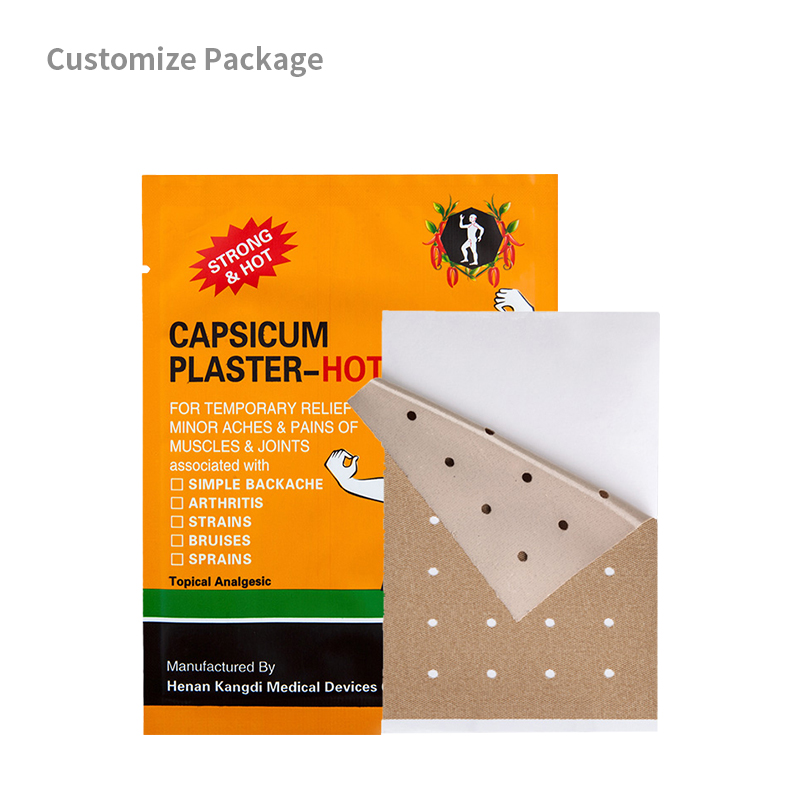The Key Steps in the Manufacturing Process of OEM Capsicum Plaster
When it comes to the production of OEM (Original Equipment Manufacturer) capsicum plaster, a thorough understanding of the manufacturing process is crucial for ensuring the quality and effectiveness of the final product. This article delves into the key steps involved in the manufacturing process of OEM capsicum plaster, highlighting the expertise and precision required at each stage.
Step 1: Material Selection
The first step in the manufacturing process of OEM capsicum plaster is material selection. High-quality ingredients are essential for creating an effective and safe product. Manufacturers typically use capsaicin, the active component in chili peppers, as the primary ingredient. It is important to ensure that the capsaicin is sourced from reliable suppliers and meets strict quality standards. Additionally, other ingredients like adhesive, backing material, and release liner are carefully selected to ensure the plaster's adhesiveness, flexibility, and ease of use.
Step 2: Formulation Development
Once the materials are selected, the next step is formulation development. This involves mixing the capsaicin and other ingredients in precise proportions to create the desired formula. The formulation is carefully optimized to ensure the desired therapeutic effect while minimizing potential side effects. Manufacturers may also include additional herbal ingredients or essential oils to enhance the product's effectiveness or provide additional benefits.
Step 3: Manufacturing Process
The manufacturing process begins with the preparation of the various components of the capsicum plaster. The adhesive and capsaicin formula are mixed thoroughly to ensure a homogeneous blend. The backing material, which serves as the base for the plaster, is then coated with the adhesive-capsaicin mixture using specialized equipment. The release liner, which protects the adhesive surface before application, is then applied to the coated backing material.
Step 4: Customization
OEM capsicum plaster manufacturers offer the flexibility of customization. This step involves modifying the product based on the specific requirements of the customer. Customization options may include varying the size and shape of the plaster, adjusting the capsaicin concentration, or including additional ingredients. Manufacturers typically have a range of standard sizes and formulations available, but they can also create custom formulations based on specific requests.
Step 5: Quality Control
Quality control is a crucial step in the manufacturing process of OEM capsicum plaster. Manufacturers perform a series of tests to ensure that the product meets strict quality standards. This includes checking the adhesive strength, capsaicin content, and overall performance of the plaster. Additionally, the product is inspected visually to ensure it is free from defects or imperfections. Only products that meet the manufacturer's strict quality standards are released for sale.
Step 6: Packaging and Labeling
The final step in the manufacturing process is packaging and labeling. The capsicum plaster is carefully packaged in sterile and tamper-evident packaging to ensure its safety and integrity. Labels are applied to the packaging, providing information such as the product's ingredients, usage instructions, warnings, and expiration date. The packaging and labeling process ensures that the product is properly identified and meets regulatory requirements.
Questions Related to the Manufacturing Process of OEM Capsicum Plaster
- What are the key factors to consider during material selection for OEM capsicum plaster?
- How is the capsaicin formula optimized during formulation development?
- What types of equipment are used in the manufacturing process of capsicum plaster?
- How does customization affect the manufacturing process of OEM capsicum plaster?
- What are the most common quality control tests performed on OEM capsicum plaster?
- What regulations govern the packaging and labeling of OEM capsicum plaster?
In conclusion, the manufacturing process of OEM capsicum plaster involves several key steps, including material selection, formulation development, manufacturing, customization, quality control, and packaging and labeling. Each step requires expertise and precision to ensure the production of a high-quality and effective product. Understanding the manufacturing process is crucial for manufacturers and customers alike to ensure the safety, effectiveness, and satisfaction with the final product.






